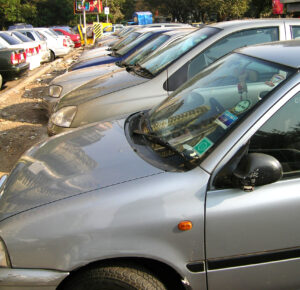
As more and more vehicles hit already cluttered roads, the dangers of vehicular fires also rise manifold. With a big surge in the number of vehicular fires across the country in recent times, it is time for not just vehicle owners but also the sundry to be aware of their hazards and keep the dangers at bay.
A fire is a fire wherever it erupts or whatever triggers it. While fires in bigger establishments always corner limelight, a lesser known but equally hazardous aspect is vehicle fires. In the past three months, India has witnessed a disconcerting surge in vehicle fires that have left a trail of destruction and raised critical safety concerns. These incidents have not only posed a significant threat to public safety but have also ignited debates surrounding vehicle safety standards, maintenance, and regulatory oversight.
13 people were killed when a passenger bus caught fire after an accident in Guna, Madhya Pradesh. The fire was a result of the collision with a dumper. A harrowing tragedy unfolded on the Tumkuru Road in northern Bengaluru, claiming the life of a real-estate businessman when his vehicle became engulfed in flames. The victim was trapped as it was engulfed in flames. In both the cases, deaths occurred even before rescue could be thought of.
Back home in Mumbai, the fire that left 36 vehicles charred in the Phoenix Mills parking slot is another telling example. The repercussions of these incidents reverberate beyond the immediate loss of life. Vehicular fire safety rarely gets the importance and attention it deserves although loss to life and property are no less. In all these cases, safety got a short shrift. Four wheelers, especially buses and trucks that carry large number of people come with bigger risk as they leave little scope to wriggle out.
Equipping vehicles with fire extinguishers and knowing how to employ them effectively during emergencies is a concept that is almost non-existent in India but it can serve as a pivotal line of defence. In the event of smoke or fire within the vehicle, swift action – pulling over to a safe location, shutting off the engine, and promptly evacuating – becomes imperative for personal safety and preventing further escalation. The Tumkuru Road incident stands as a stark reminder of the fragility of life and the importance of vehicular safety measures.
The tragedy underlines the need for heightened vigilance, preparedness, and prompt responses to avert and mitigate potential vehicular emergencies, ensuring safer journeys for all commuters traversing these busy roads. Understanding the reason for fire and taking necessary measures becomes crucial when a vehicle is on flames. Like other fires, vehicular fires too cause panic among the occupants.
Vehicles carry fuel tanks with petrol, diesel or compressed natural gas (CNG) cylinders and thus are at permanent risk. The dos and don’ts do not get any thought at all as nobody has the time and patience when moving and especially on highways and crowded roads. The people around naturally become a collateral risk. A look at these tells why.
*Stop and switch off the ignition
*Get out of the car right away
*unlock all doors and windows.
*Move away from the burning car and alert oncoming traffic about a possible explosion.
*Keep a fire extinguisher at hand.
*Do not open the bonnet/boot.
*Contact the fire department, traffic police and insurance provider.
Fire in a parked vehicle or while waiting in the traffic can be very tricky to handle. It is unwise to put out the fire on your own. Also, it is risky to retrieve personal belongings. A burning vehicle releases toxic gases. A vehicle can catch fire in the event of an accident or collision. A fire extinguisher is a vital safety equipment in case of a fire and it is essential to understand how it operates. Identifying the warning signs of a potential vehicle fire is critical to take evasive actions. The tell-tale signs are:
*Blown fuses
*Loud exhaust sound
*Rise in engine temperature
*Low fluid levels
*Tyre failure
*A burning smell.
Since a vehicle is a complex piece of machinery, there are several factors that can cause a fire. Mechanical failure, electrical failure, faulty/loose wiring, oil spill, worn out/loose hoses are the usual culprits. For any fire, the basic guiding principle is prevention is always better than reacting. Regular servicing, fuel leakage checks, a fire extinguisher at hand, no smoking inside, alert about any burning smell and parking at inflammable places (like fuel-filling stations) are paramount. Since vehicles are highly inflammable, sometimes even the quickest of responses from the Fire Brigade may not be enough. Awareness and a preventive mindset are the key.

A Column By
Raju Korti – Editor
The Resource 24X7
A Journalist With 4 Decades of Experience With Leading Media Houses.
